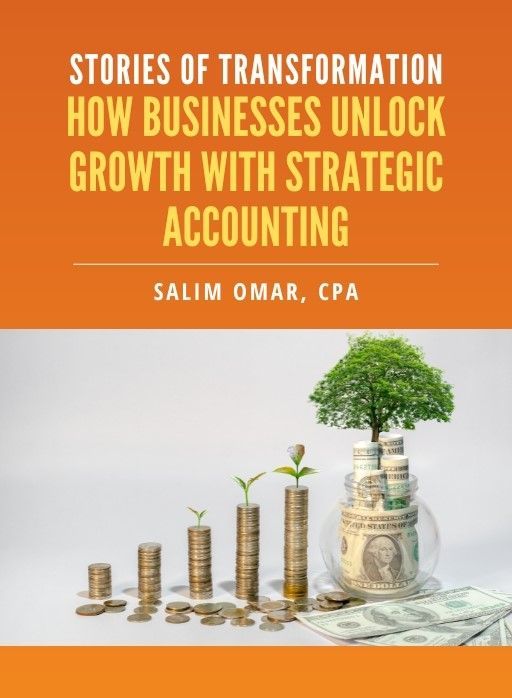The Q4 Tax Reset: How Strategic Spending Now Reduces Your Year-End Tax Burden
For many businesses, Q4 isn’t just about chasing final sales targets — it’s about making smart financial choices that shape the next year. One of the most overlooked opportunities? A year-end tax reset. Strategic spending in these final months can shrink your tax bill, free up cash, and set the stage for growth.
But here’s the truth: last-minute, scattershot spending rarely delivers real value. The difference comes when you combine timing, tax rules, and business strategy into a focused plan.
At Straight Talk CPAs, we’ve seen business owners walk into January relieved, not stressed, because they treated Q4 as a chance to take control — not just to “spend for deductions,” but to spend with purpose.
Step 1: Review Your Year-to-Date Tax Position
The first move in any reset is clarity. You need a solid snapshot of your finances before deciding what levers to pull.
That means:
- Estimating taxable income based on year-to-date results and Q4 projections.
- Reviewing deductions already taken to avoid unnecessary overspending.
- Identifying credits that may apply — such as R&D, energy efficiency, or hiring incentives.
What often surprises owners is how small adjustments can unlock big tax advantages. Imagine a business that’s just shy of qualifying for a research credit. With the right planning, reallocating end-of-year spending toward eligible projects can push them over the threshold — turning ordinary expenses into meaningful savings.
It’s a reminder that tax planning isn’t just about numbers. It’s about positioning those numbers to work for you.
Step 2: Accelerate Strategic Expenses
Q4 is the perfect window to pull certain expenses forward. Done right, it creates immediate tax benefits while laying the groundwork for next year.
Some common moves include:
- Equipment or technology upgrades that qualify for Section 179 deductions.
- Prepaying rent, insurance, or subscriptions to lock in deductions now.
- Invest in employee training or development to strengthen your team for 2025.
These aren’t just accounting tricks — they’re business decisions with long-term impact. For example, prepaying rent doesn’t just reduce taxable income. It also provides cash flow stability in Q1, which is often a slower revenue month for many industries.
Similarly, investing in training now doesn’t just lower taxes — it builds a stronger workforce ready to hit the ground running in the new year.
Step 3: Defer Income (When It Works in Your Favor)
Sometimes, the smartest move is to slow down incoming revenue. If your business is already having a high-profit year, pushing some income into January can keep your tax liability in check.
That might involve:
- Holding invoices until early Q1.
- Negotiating milestone payments that shift into the next year.
- Reviewing contract structures for timing flexibility.
Of course, this isn’t about playing games with revenue — it’s about managing cash in a way that aligns with your bigger financial picture. Businesses that plan ahead can avoid unnecessary tax spikes without straining client relationships.
The key is balance: you’re not reducing income, you’re simply choosing the best timing for when it lands.
Step 4: Balance Growth with Tax Savings
Here’s where many businesses miss the mark: focusing only on reducing taxes without thinking about growth. Yes, deductions matter. But the real win comes from spending strategically on things that fuel momentum.
Ask yourself:
- Does this expense create value beyond the deduction?
- Will it strengthen cash flow, efficiency, or client relationships next year?
- Could it position us for expansion, hiring, or higher margins in 2025?
Take, for instance, the difference between spending on a last-minute expansion vs. investing in automation. One business we worked with debated adding warehouse space in December, but instead put their dollars into upgraded technology. That move not only gave them a deduction now but also streamlined operations for the next year — turning tax planning into a growth strategy.
That’s the sweet spot: saving money today while planting seeds for tomorrow.
Final Word
Think of a Q4 tax reset as hitting pause, not panic. It’s not about rushing to spend money just because the year is ending. It’s about slowing down, looking at your numbers, and making choices that actually help—lowering your tax bill now while setting you up for a smoother year ahead.
The businesses that really benefit aren’t the ones throwing money around in December. They’re the ones asking the right questions:
- Should we move this expense up?
- Would it be smarter to wait?
- How does this decision support where we want to be next year?
Every move is tied back to growth, not just tax savings.
At
Straight Talk CPAs, we help businesses do exactly that. Because when you use Q4 strategically, you don’t just cut your tax bill — you gain momentum.
Free eBook:
Stories of Transformation


Salim is a straight-talking CPA with 30+ years of entrepreneurial and accounting experience. His professional background includes experience as a former Chief Financial Officer and, for the last twenty-five years, as a serial 7-Figure entrepreneur.





